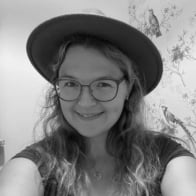Electric Current
Electric Current
- Electric current is defined as:
The rate of flow of charge
- It is measured in units of amperes (A) or amps
- The charge, current and time are related by the equation:

- There are several examples of electric currents, including in household wiring and electrical appliances
Electric Charge
- Electric charge is a property of some particles
- For example, protons have a positive charge and electrons have a negative charge
- Charge has the unit Coulombs, C
- In electric circuits, electrons are usually the charge carriers
- They have a charge of 1.6 × 10−19 C
- Charge, Q, can be calculated using the equation
Q = ne
- Where:
- Q = charge (C)
- n = number of electrons
- e = electron charge (C)
- If 1 electron has a charge of 1.6 × 10−19 C
- Then, 1 C of charge contains 6.25 × 1018 electrons
- Charge is sometimes written as ΔQ which means 'change in charge'
- Similarly, time is written as Δt means 'change in time'
- When two oppositely charged conductors are connected together (by a length of wire), charge will flow between the two conductors, causing a current
- Therefore, rearranging for current, I gives the equation:


Charge can flow between two conductors. The direction of conventional current in a metal is from positive to negative
Direction of Flow of Charge
- In electrical wires, the current is a flow of electrons
- Electrons are negatively charged; they flow away from the negative terminal of a cell towards the positive terminal
- Conventional current is defined as the flow of positive charge from the positive terminal of a cell to the negative terminal
- This is the opposite to the direction of electron flow, as the conventional current was described before electric current was really understood

By definition, conventional current always goes from positive to negative (even through electrons go the other way)
Measuring Current
- Current is measured using an ammeter
- Ammeters should always be connected in series with the part of the circuit the current is to be measured through
- This is because the current is the same in all components connected in series

An ammeter can be used to measure the current around a circuit and always connected in series
Worked example
The current in a filament lamp is 8 mA.
Which answer below explains how this current can be obtained?
A. 1 J of energy is used by 1 C of charge
B. A charge of 4 C passes in 500 s
C. A charge of 8 C passes in 100 s
D. A charge of 1 C passes in 8 s
ANSWER: B
Step 1: Write out the equation relating current, charge and time
Q = It
Step 2: Rule out any obviously incorrect options
-
- Option A does not contain charge or time, so can be ruled out
Step 3: Try the rest of the options to determine the correct answer
-
- Consider option B:
I = 4 / 500 = 8 × 10–3 = 8 mA
-
- Consider option C:
I = 8 / 100 = 80 × 10–3 = 80 mA
-
- Consider option D:
I = 1 / 8 = 125 × 10–3 = 125 mA
-
- Therefore, the correct answer is B
Exam Tip
Although electric charge can be positive or negative, since the conventional direction of current is the flow of positive charge the current should always be a positive value for your exam answers.
An example of this is electrolysis where ions are used as charge carriers in the ionic solution and the ions travel through a liquid as an electric current

